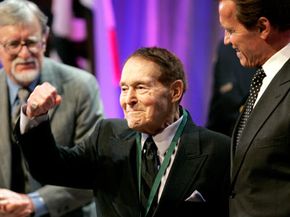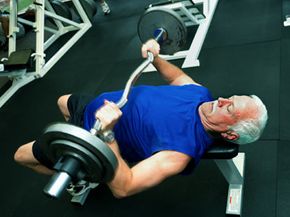With a few exceptions, senior citizens aren't usually thought of as very athletic. With age comes a decrease in energy and strength, along with a host of conditions and diseases that can make exercising more difficult. So it only makes sense that as you get older, your fitness regimen will have to change or even go away entirely, right? Not necessarily.
There's no such thing as being "too old" to exercise -- it's a necessary component of maintaining good health at any age. The longest-lived woman in the world, Jeanne Calment, took up fencing at age 85, rode her bicycle until 100 and lived alone until 109 (she died at 122). Jack LaLanne, the "godfather of fitness," still exercises two hours a day at 94 years old. Both of these people are the exception to the rule, and we aren't as likely to be exercising as strenuously into our 90s or 100s. LaLanne has been exercising regularly since he was a teenager, and Calment lived the relatively stress-free life of a socialite.
Advertisement
But it's never too late to start a fitness regimen, and there's no reason to give up existing exercise if you're in good health and your doctor approves of your activity. An exercise program can help prevent many of the problems associated with getting older, including heart disease, high blood pressure, obesity, diabetes and Alzheimer's disease. It can also boost your immunity, help you sleep better and increase your self-esteem. Weight-bearing exercise can prevent osteoporosis, because muscles pull on bone and stimulate it to grow. A 2004 study published in the Archives of Internal Medicine showed that women in their 70s who exercised regularly were more likely to be living independently more than a decade later [source: CNN].
There are some specific changes that our bodies undergo with age that directly affect our overall fitness. Before we look at some basic fitness tips, let's find out exactly what goes on.
Advertisement

